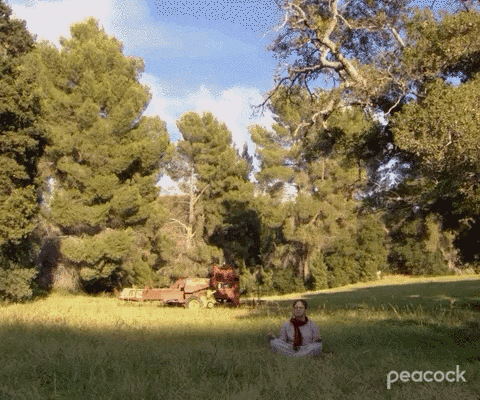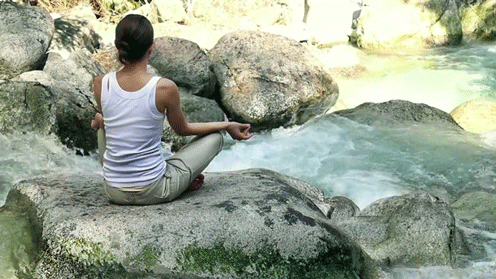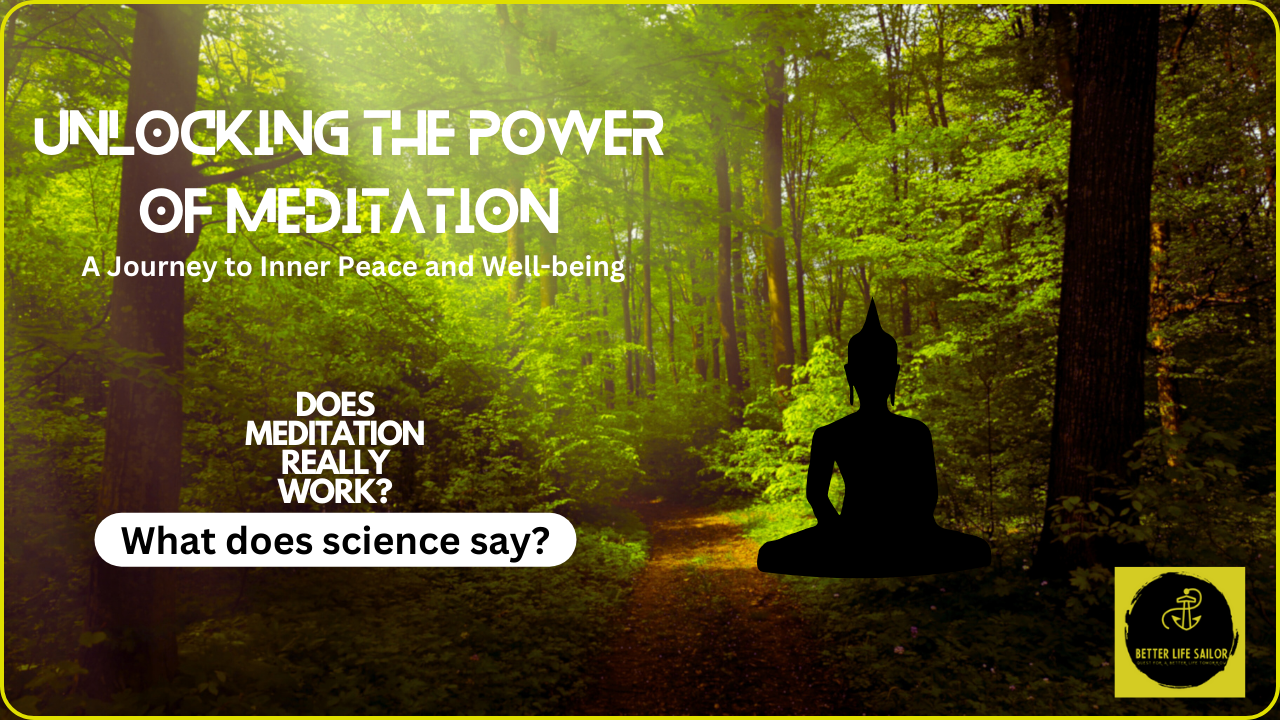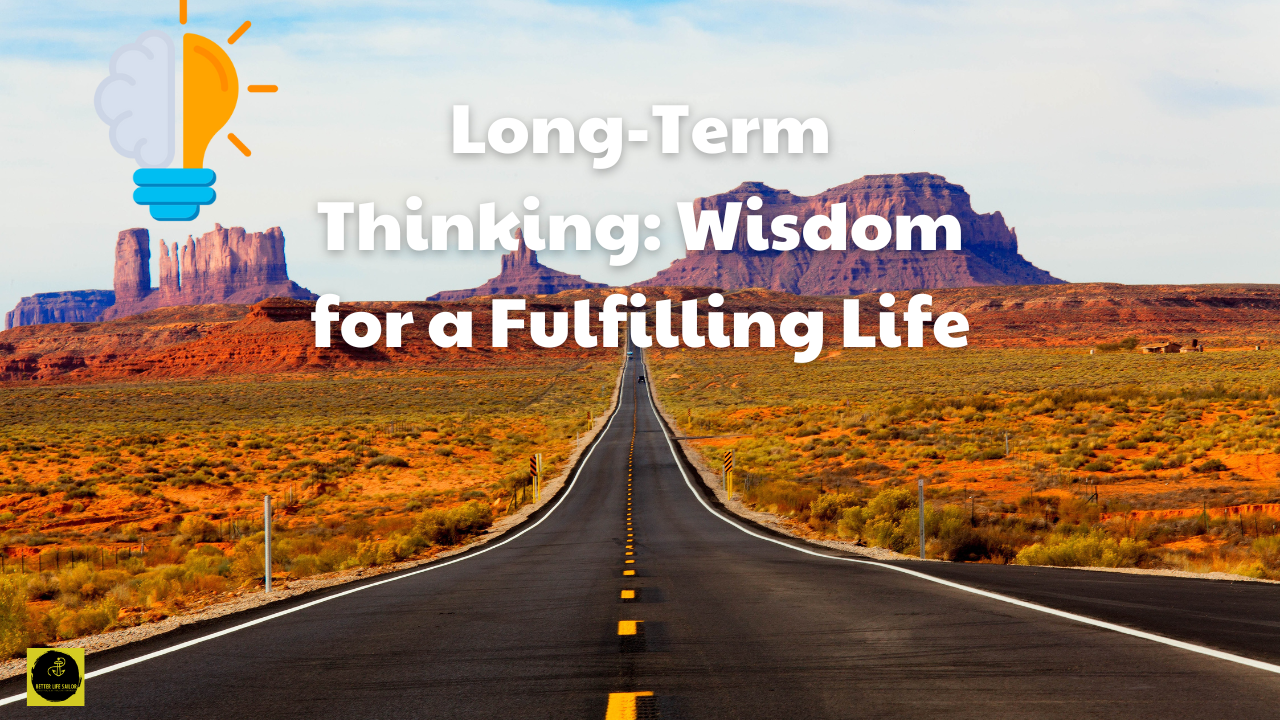It’s not just about sitting cross-legged and chanting “Om.” Meditation has real, science-backed benefits that can transform your life. So, grab a comfy seat, close your eyes if you like, and let’s embark on a journey to discover the power of meditation.
We often hear the word “meditation” thrown around, but what is it, really? At its core, meditation is a mental practice that involves focusing your mind on a particular object, thought, or activity to achieve a mentally clear and emotionally calm state. It’s not about emptying your mind of thoughts but rather about observing them without judgment.
So, why should you care about meditation? Let’s talk about the science behind it.

“Studies using neuroimaging techniques have shown that regular meditation can increase gray matter density in areas associated with memory, learning, and self-awareness.”
Stress is something we all deal with, but did you know that meditation can be a powerful tool to combat it? Researchers have found that meditation can lower the levels of stress hormones like cortisol, leading to reduced stress and anxiety. It’s like a natural stress-buster.
Attention and concentration are vital in our fast-paced world. Meditation practices that involve focused attention can significantly improve these cognitive skills. Imagine being more present and focused in every aspect of your life, from work to relationships. Emotions can sometimes get the best of us, but meditation can help. By regularly practicing meditation, individuals can better regulate their emotions. This means reduced reactivity to emotional stimuli and increased emotional resilience.
Pain is another common human experience, and it can be debilitating. Scientific studies have indicated that meditation can be effective in reducing the perception of pain. It’s even used as a complementary approach in pain management programs. Sleep troubles keeping you up at night? Meditation practices can contribute to better sleep quality. Imagine finally getting the restful night’s sleep you’ve been longing for.
Meditation isn’t just for mental health; it can have physical benefits too. It’s been linked to reduced blood pressure, which can have cardiovascular benefits and help manage hypertension.

So, we’ve explored some of the incredible science-backed benefits of meditation, but how do you get started? Meditation is a wonderful practice that can bring calm, focus, and clarity to your life. Taking some time and practicing daily, it’s like investing in a skill that helps in areas of your life. If you’re new to meditation, I’ve been practicing for a while, so I thought it could help, Here’s a step-by-step guide to help you get started:
- Choose a Quiet Space: Find a quiet, comfortable place where you won’t be easily disturbed. It doesn’t have to be a dedicated meditation room; a corner of your bedroom or a quiet spot in your living room will do. Though I won’t prefer bed.
- Set a Time: Decide how long you want to meditate. As a beginner, it’s okay to start with just a few minutes (5-10 minutes) and gradually increase the duration as you become more comfortable with the practice.
- Sit Comfortably: You don’t need any special equipment or postures. Sit in a comfortable position. You can sit in a chair with your feet flat on the floor or cross-legged on a cushion if that’s more comfortable. The key is to keep your back straight to maintain alertness.
- Close Your Eyes (Optional): Closing your eyes can help you eliminate visual distractions, but if you’re uncomfortable doing so, you can also keep your eyes partially open with a soft gaze.
- Focus on Your Breath: Take a few deep breaths to settle in. Then, shift your attention to your breath. Observe the natural rhythm of your breath as it goes in and out. Pay attention to the sensation of the breath entering and leaving your nostrils or the rise and fall of your chest or abdomen.
- Let Go of Thoughts: Your mind will likely start to wander, which is perfectly normal. When you notice your thoughts drifting, gently bring your focus back to your breath. Don’t judge yourself for wandering thoughts; it’s a natural part of meditation.
- Body Scan (Optional): Another technique for beginners is to do a body scan. Start at the top of your head and slowly move your attention down through your body, noticing any areas of tension or discomfort. As you identify these areas, try to relax them with your breath.
- Use Guided Meditations (Optional): If you’re unsure where to start, consider using guided meditation apps (Headspace, Calm) or recordings. They can provide step-by-step instructions and soothing background music or sounds.
- Set Realistic Expectations: Understand that meditation is a skill that takes time to develop. It’s normal to have sessions where your mind feels restless. Be patient and consistent with your practice.
- End Mindfully: When your meditation session is over, don’t rush to get up. Take a few moments to reorient yourself to your surroundings. Slowly open your eyes if they were closed. Stretch and move gently before getting up.
- Consistency is Key: To experience the full benefits of meditation, make it a regular practice. Try to meditate at the same time each day to establish a routine.

Remember, meditation is a personal practice, and there’s no right or wrong way to do it. The most important thing is to be kind and patient with yourself as you begin your journey. Over time, you’ll likely notice increased calmness, improved focus, and greater mindfulness in your daily life.
That’s all for today’s episode of Better Life Sailor, I hope you’ve enjoyed this deep dive into the science of meditation. If you found this article helpful, please subscribe to our newsletter and share it with your friends and family. Remember, the journey to inner peace and well-being begins with a single breath.



